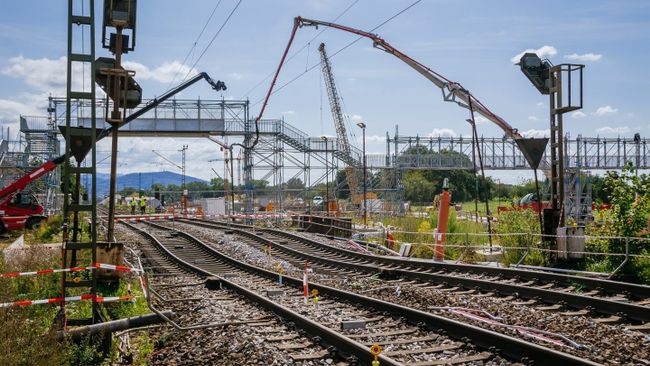Europe’s leading rail freight organisations have pooled their resources to assess the economic impact of the Rastatt crisis.
According to a joint study published by the European Rail Freight Association (ERFA), Network of European Railways (NEE) and the International Union for Road-Rail Combined Transport, the economic damage of the incident was at least €2.048 billion.
This figure covers the losses of rail logistics companies (€969 million), manufacturing industries (€771 million) and other parties such as infrastructure managers and terminal operators (€308 million).
Beginning in August, 2017, the Rastatt Tunnel in Germany was closed for almost eight weeks after groundwater broke into one of two new high-speed rail tunnels under construction for Deutsche Bahn just south of the town in Baden-Württemberg.
The collapse happened at the only point that the new 4.27km-long tunnels cross under the existing line and earth movement on the surface resulted.
Significantly, the closed line is usually used by up to 200 freight and another 150 passenger services daily – the busiest double track main line anywhere in Europe.
Only 33 per cent of scheduled freight traffic was able to operate during the eight weeks of disruptions.
Like this story? Follow us on Facebook to keep up to date on rail industry news
There was also significant damage to the confidence of customers in trusting rail freight to transport their goods rather than other modes.
ERFA previously described the incident as “the final wake-up call”, stating that improved performance is needed to make rail a more attractive option.
It said that late information on planned disruptions, limited or unsuitable diversionary routes, and uncoordinated infrastructure works contribute to a poor quality of service.
One of the changes welcomed by the group was the need for infrastructure managers to offer at least two alternative routes for the most disruptive capacity restrictions – defined as lasting more than 30 days and affecting more than 50 per cent of traffic.
Reacting to the new report, NEE managing director Peter Westenberger said: “Every single day of standstill during the Rastatt incident caused damages of around €40 million throughout Europe.
“Therefore, it must be clear that a comparable incident as Rastatt shall never happen again.”
The study was completed by Hanseatic Transport Consultancy.
Read more: Why Europe’s busiest railway collapsed at Rastatt



